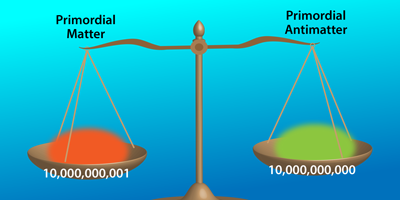Relaxing Higgs Could Explain Absence of Antimatter
All the matter in the Universe today is what was left over after the nearly equal amounts of primordial matter and antimatter annihilated. Most existing laws of nature treat matter and antimatter equally, so physicists continue to look for new, compelling theories to explain the tiny but important asymmetry that would favor matter. Now, Alexander Kusenko and Louis Yang at the University of California, Los Angeles, and Lauren Pearce at the University of Minnesota, Minneapolis, make use of the information gleaned from the recently discovered Higgs boson to propose a new model explaining matter’s dominance.
Elementary particles get mass by coupling to the Higgs field—a bit like hikers being hindered by a blanket of snow. The average value of the Higgs field is analogous to the depth of snow cover, and can, in principle, vary with time, depending on the Higgs boson mass. This mass, which was determined at CERN to be 125.5 giga-electron-volts, is consistent with the possibility that the Higgs field’s average value evolved after the big bang from a high value, to the currently observed low value, a process called “Higgs relaxation.”
If the average value of the Higgs field evolves in time, it can introduce a splitting between the masses of particles and their antiparticles. Kusenko et al. use this idea to construct a model with a relaxing Higgs field that could have created a matter-antimatter asymmetry consistent with observations. An appealing aspect of their model is its simplicity: it assumes there is a heavy Majorana neutrino—a hypothetical particle that is its own antiparticle, and whose existence is suggested by the measured neutrino masses—but otherwise no other new particles.
This research is published in Physical Review Letters.
–Robert Garisto





